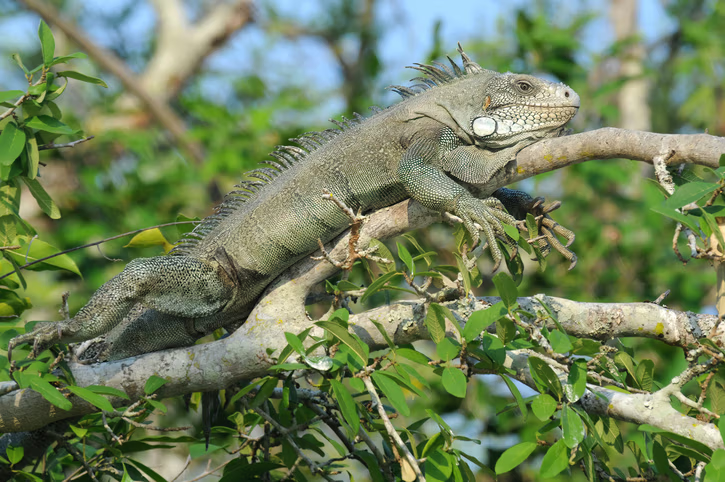Green iguanas are native to Central and South America, but their range has expanded due to pet releases. They are now found in parts of the USA, particularly in Florida, as well as on some Caribbean islands. They prefer habitats that are close to water bodies like rivers, lakes, and ponds.
Green iguanas can grow quite large, with some reaching lengths of up to 6.5 feet (about 2 meters) from head to tail. They have a row of spines running down their backs to their tails, and a dewlap (a flap of skin) under their chins, which can be expanded as a display during social interactions or when threatened.
While they are called “green” iguanas, their color can vary widely based on factors like age, health, and temperature, ranging from bright green to dull green, and sometimes even shades of brown, blue, or orange.
Green iguanas are primarily herbivorous, feeding on leaves, flowers, and fruit. This diet is crucial for their health in captivity, as improper diets can lead to serious health issues.
Female iguanas lay clutches of 20 to 70 eggs once a year, depending on the size and health of the female. The eggs are buried in sandy or soft soil, and hatch after 10 to 15 weeks. The hatchlings are independent from birth.
Being cold-blooded, green iguanas regulate their body temperature through their environment. They bask in the sun to warm up and may seek shade or water to cool down.
In the wild, green iguanas typically live around 10 years, but in captivity, with proper care, they can live up to 20 years or more.


